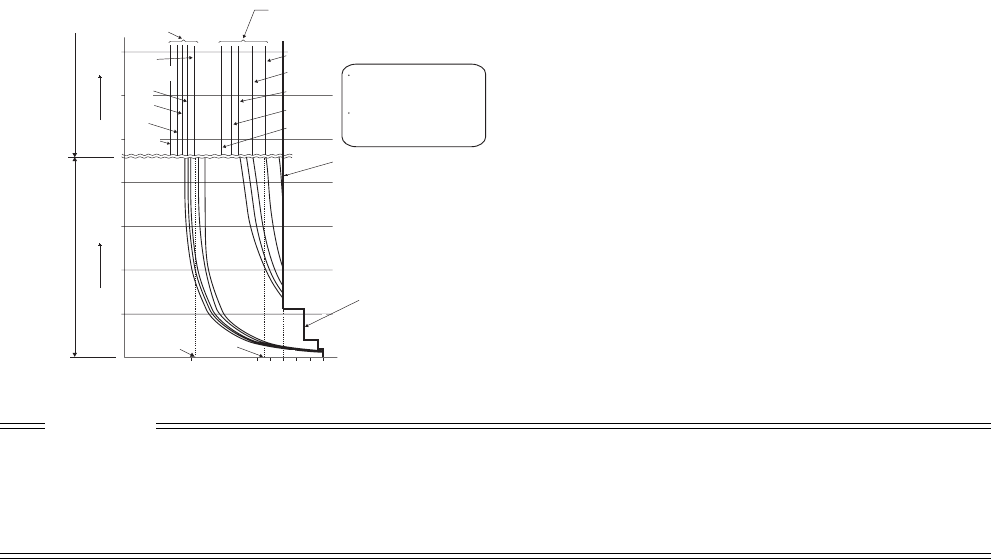
170
(2) Wiring of the power supply and motor
For wiring the input (R/L1, S/L2, T/L3) and output (U, V, W) terminals of the inverter, use the UL Listed copper, stranded
wires (rated at 75°C) and round crimping terminals. Crimp the crimping terminals with the crimping tool recommended
by the terminal maker.
(3) Short circuit ratings
• 200V class
Suitable For Use in A Circuit Capable Of Delivering Not More Than 100kA rms Symmetrical Amperes, 264V Maximum.
• 400V class
55K or lower
Suitable For Use in A Circuit Capable Of Delivering Not More Than 100kA rms Symmetrical Amperes, 528V Maximum.
75K or higher
Suitable For Use in A Circuit Capable Of Delivering Not More Than 100kA rms Symmetrical Amperes, 550V Maximum.
(4) Motor overload protection
This inverter is certified as a motor overload protection device by UL.
When using the electronic thermal relay function as motor overload protection, set the rated motor current to Pr. 9
Electronic thermal O/L relay.
•The use of FR-F700P with an IPM motor is not certified by the UL nor cUL.
Electronic thermal relay function operation characteristic
This function detects the overload (overheat) of the
motor, stops the operation of the inverter's output
transistor, and stops the output. (The operation
characteristic is shown on the left)
⋅ When using the Mitsubishi constant-torque motor
1) Set "1" in
Pr. 71
. (This provides a 100% continuous torque
characteristic in the low-speed range.)
2) Set the rated current of the motor in Pr. 9.
*1 When 50% of the inverter rated output current (current value) is set
in Pr. 9
*2 The % value denotes the percentage to the inverter rated output current.
It is not the percentage to the motor rated current.
*3 When you set the electronic thermal relay function dedicated to the
Mitsubishi constant-torque motor, this characteristic curve applies
to operation at 6Hz or higher.
CAUTION
⋅ Protective function by electronic thermal relay function is reset by inverter power reset and reset signal input. Avoid
unnecessary reset and power-OFF.
⋅ When multiple motors are operated by a single inverter, protection cannot be provided by the electronic thermal relay function.
Install an external thermal relay to each motor.
⋅ When the difference between the inverter and motor capacities is large and the setting is small, the protective characteristics of
the electronic thermal relay function will be deteriorated. In this case, use an external thermal relay.
⋅ A special motor cannot be protected by the electronic thermal relay function. Use the external thermal relay.
120
Electronic thermal relay
function for transistor
protection
52.5%
105%
50
100
150
60
120
180
240
50
60
70
6Hz
20Hz
10Hz
6Hz
0.5Hz
30Hz or more*
3
20Hz
10Hz
0.5Hz
Pr. 9 = 50% setting of
inverter rating*
1.2
Pr. 9 = 100% setting
of inverter rating*
1.2
(s) unit display in this range
(min) unit display in
this range
Operation time (min)Operation time (s)
Characteristic when
electronic thermal relay
function for motor
protection is turned OFF
(When Pr. 9 setting is 0(A))
30Hz
or more*
3
Inverter output current (%)
(% to the rated output current)
Operation range
Range on the right of
characteristic curve
Non-operation range
Range on the left of
characteristic curve


















